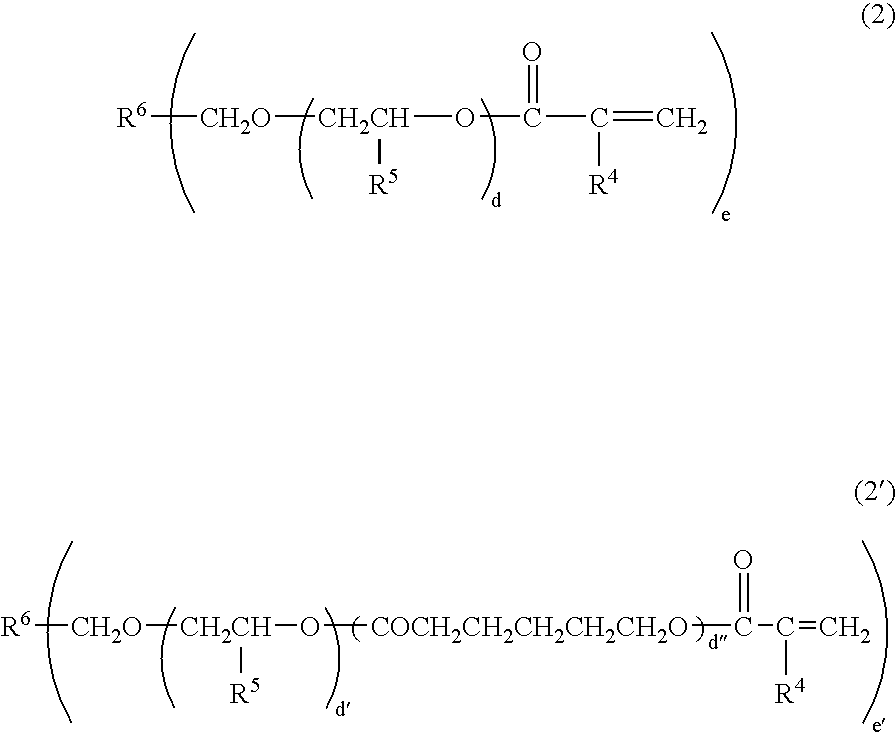Curable composition comprising a photochromic compound
a technology of photochromic compound and cure composition, which is applied in the direction of electrography/magnetography, spectacles/goggles, spectral modifiers, etc., can solve the problems of color density decline, color development speed and fade speed, and color density declin
- Summary
- Abstract
- Description
- Claims
- Application Information
AI Technical Summary
Benefits of technology
Problems solved by technology
Method used
Image
Examples
example 1
0.03 part by weight of chromene 1 and 1 part by weight of perbutyl ND as a polymerization initiator were added to and fully mixed with 100 parts by weight of polymerizable monomers consisting of 20 parts by weight of trimethylolpropane trimethacrylate, 5 parts by weight of .gamma.-methacryloyloxypropyl trimethoxysilane, 25 parts by weight of 2,2-bis(4-methacryloyloxyethoxyphenyl)propane, 30 pats by weight of tetraethylene glycol dimethacrylate, 3 parts by weight of polyethylene glycol diacrylate having an average molecular weight of 532, 10 parts by weight of glycidyl methacrylate, 6 parts by weight of .alpha.-methylstyrene and 1 part by weight of .alpha.-methylstyrene dimer. This mixed solution was injected into a mold consisting of glass plates and a gasket comprising an ethylene-vinyl acetate copolymer to carry out cast polymerization. Polymerization was carried out in an air oven by gradually increasing the temperature from 30 to 90.degree. C. in 18 hours and maintaining it at 9...
examples 2 to 20
Photochromic cured products were obtained and evaluated for their characteristic properties in the same manner as in Example 1 except that radically polymerizable monomer compositions, chromene compounds and other additives shown in Table 1 were used.
TABLE 2
PUM
| Property | Measurement | Unit |
|---|---|---|
| degree of polymerization | aaaaa | aaaaa |
| temperature | aaaaa | aaaaa |
| temperature | aaaaa | aaaaa |
Abstract
Description
Claims
Application Information
 Login to View More
Login to View More - R&D
- Intellectual Property
- Life Sciences
- Materials
- Tech Scout
- Unparalleled Data Quality
- Higher Quality Content
- 60% Fewer Hallucinations
Browse by: Latest US Patents, China's latest patents, Technical Efficacy Thesaurus, Application Domain, Technology Topic, Popular Technical Reports.
© 2025 PatSnap. All rights reserved.Legal|Privacy policy|Modern Slavery Act Transparency Statement|Sitemap|About US| Contact US: help@patsnap.com



